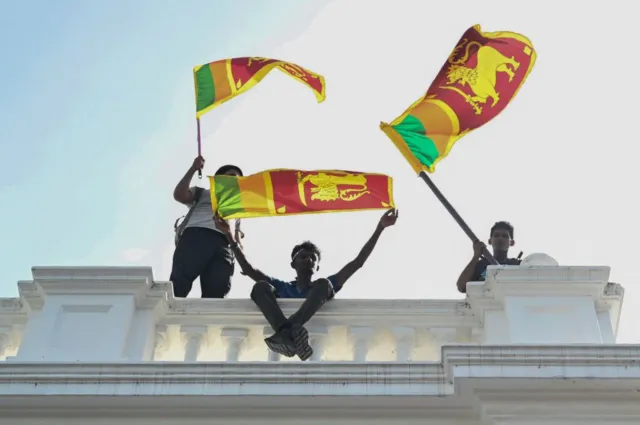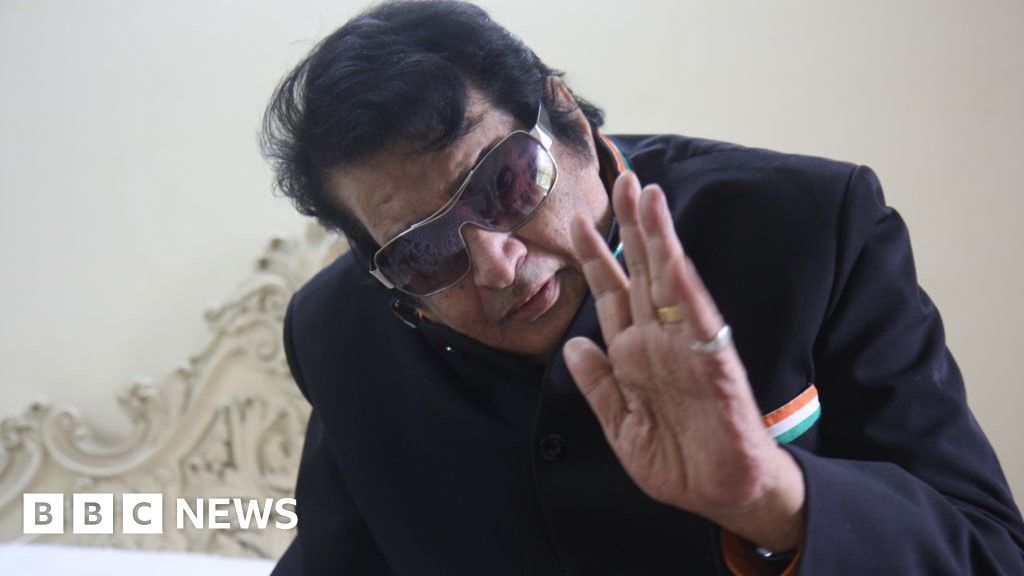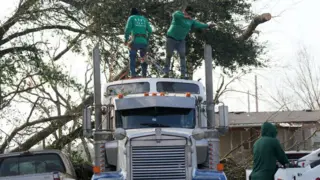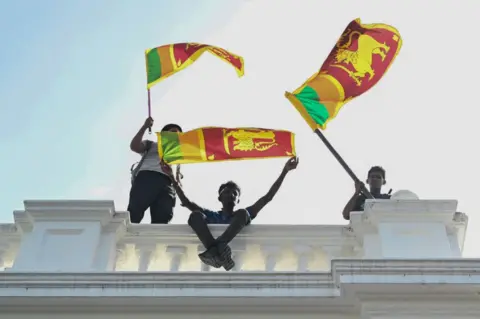 Getty Images
Getty ImagesSri Lankans will elect a new president in the first election since mass protests sparked by the country’s worst-ever economic crisis unseated the leader in 2022.
Saturday’s election is widely regarded as a referendum on economic reforms meant to put the country on the road to recovery.
But many are still struggling to make ends meet because of tax hikes, and cuts to subsidies and welfare.
Multiple analysts predict that economic concerns will be front of mind for voters in what is shaping up to be a close race.
“The country’s soaring inflation, skyrocketing cost-of-living and poverty have left the electorate desperate for solutions to stabilise prices and improve livelihoods,” Soumya Bhowmick, an associate fellow at India-based think tank the Observer Research Foundation, told the BBC.
“With the country seeking to emerge from its economic collapse, this election serves as a crucial moment for shaping Sri Lanka’s recovery trajectory and restoring both domestic and international confidence in its governance.”
President Ranil Wickremesinghe, who was charged with the monumental task of leading Sri Lanka out of its economic collapse, is seeking another term.
The 75-year-old was appointed by parliament a week after former president Gotabaya Rajapaksa was chased out of power.
Shortly after taking office, Wickremesinghe crushed what was left of the protest movement. He has also been accused of shielding the Rajapaksa family from prosecution and allowing them to regroup – allegations he has denied.
Another strong contender is leftist politician Anura Kumara Dissanayake, whose anti-corruption platform has seen him draw increasing public support.
More candidates are running in Saturday’s election than any other in Sri Lanka’s history. But of more than three dozen, four are dominating the limelight.
Other than Wickremesinghe and Dissanayake, there is also the leader of the opposition, Sajith Premadasa, and the 38-year-old nephew of the ousted president, Namal Rajapaksa.
Counting begins once polls close at 16:00 local time (10:30 GMT), but results are not expected to become clear until Sunday morning.
An economy in crisis
The “Aragalaya” (struggle) uprising that deposed former president Gotabaya Rajapaksa was sparked by an economic meltdown.
Years of under-taxation, weak exports and major policy errors, combined with the Covid-19 pandemic dried up the country’s foreign exchange reserves. Public debt reached more than $83 billion and inflation soared to 70%.
While the country’s social and political elite were largely insulated against the fallout, basics like food, cooking gas and medicine became scarce for ordinary people, fuelling resentment and unrest.
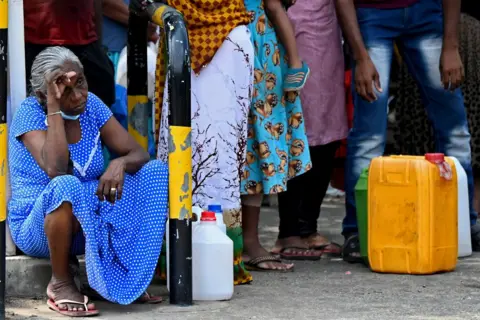 Getty Images
Getty ImagesThen-president Rajapaksa and his government were blamed for the crisis, leading to months-long protests calling for his resignation.
On 13 July 2022, in dramatic scenes that were broadcast around the world, crowds overran the presidential palace, jumping into the swimming pool and ransacking the house.
In the wake of Rajapaksa’s flight from the country – an exile that lasted 50 days – the interim government of President Wickremesinghe imposed strict austerity measures to salvage the economy.
Although the economic reforms have successfully brought down inflation and strengthened the Sri Lankan rupee, everyday Sri Lankans continue to feel the pinch.
“Jobs are the hardest thing to find,” says 32-year-old Yeshan Jayalath. “Even with an accounting degree, I can’t find a permanent job.” Instead, he has been doing temporary or part-time jobs.
Many small businesses across the country are also still reeling from the crisis.
Norbet Fernando, who was forced to shut his roof tile factory north of Colombo in 2022, told the BBC that raw materials such as clay, wood and kerosene are three times more costly than they were two years ago. Very few people are building homes or buying roof tiles, he added.
“After 35 years, it hurts to see my factory in ruins,” Fernando told the BBC, adding that of the 800 tile factories in the area, only 42 have remained functional since 2022.
Central bank data on business sentiments shows depressed demand in 2022 and 2023 – and though the situation is improving in 2024, it’s still not back to pre-crisis levels.
“The Sri Lankan economy may for now have been put back on its feet, but many citizens still need to be convinced the price is worth paying,” Alan Keenan, the International Crisis Group’s (ICG) senior consultant on Sri Lanka, told the BBC.
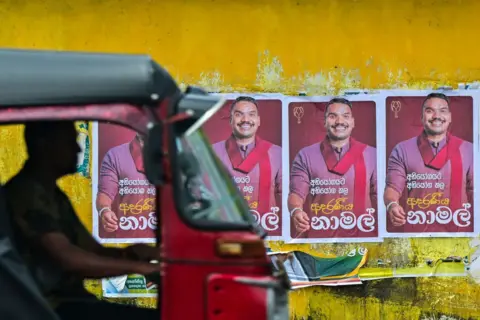 Getty Images
Getty ImagesWho are the main candidates?
Ranil Wickremesinghe: Having previously lost twice at the presidential polls, Saturday marks his third chance to be elected by the Sri Lankan people, rather than parliament
Anura Kumara Dissanayake: The candidate of the leftist National People’s Party alliance promises tough anti-corruption measures and good governance
Sajith Premadasa: The opposition leader is representing the Samagi Jana Balawegaya party – his father served as the second executive president of Sri Lanka before he was assassinated in 1993
Namal Rajapaksa: The son of Mahinda Rajapaksa, who led the country between 2005 and 2015, he hails from a powerful political lineage, but will need to win over voters who blame his family for the economic crisis
How does the vote work?
Voters in Sri Lanka elect a single winner by ranking up to three candidates in order of preference.
If a candidate receives an absolute majority, they will be declared the winner. If not, a second round of counting will commence, with second and third-choice votes then taken into account.
No election in Sri Lanka has ever progressed to the second round of counting, as single candidates have always emerged as clear winners based on first-preference votes.
This year could be different.
“Opinion polls and initial campaigning suggest the vote is likely, for the first time ever, to produce a winner who fails to gain a majority of votes,” said Mr Keenan, of ICG.
“Candidates, party leaders and election officials should be prepared to handle any possible disputes calmly and according to established procedures.”
